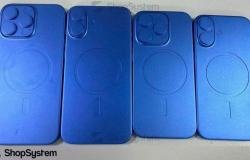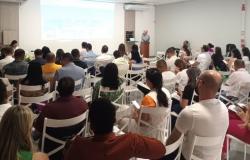Quality rehabilitation after cerebrovascular accident (CVA) minimizes the physical, emotional, cognitive and social impacts of patients affected by this condition. A National Institute for Health and Care Excellence (NICE) published its first guideline for rehabilitation after stroke in 2013. In October last year, there was an update to these recommendations based on new evidence available.
Recommendations for post-stroke rehabilitation
The recommendations expressed by the guideline were based on systematic reviews with the best evidence on this subject, also considering the cost-effectiveness of the actions. In cases where there is little evidence available in the literature about a certain conduct, the recommendation was based on the experience of the group responsible for preparing the document. The evidence was arranged based on the GRADE criteria.
→ Transferring care to home
After discharge from hospital, it is important that patients suffering from stroke have multidisciplinary therapy support maintained upon reintegration into the community. Previously, early multidisciplinary therapy support was recommended for selected individuals; Now, based on qualitative research, it has been demonstrated that rehabilitation support after hospital discharge is often not offered to individuals who need these therapies.
As already mentioned, rehabilitation consists of offering support for the practice of daily functional tasks, for motor skills, nutrition, communication, among others. Therefore, members of this multidisciplinary therapy team consist of: doctors, physiatrists, physiotherapists, occupational therapists, speech therapists, nutritionists and psychologists.
After hospital discharge, therefore, it is recommended to maintain rehabilitation as long as this therapy helps the patient achieve goals, whether in motor, sensory, emotional, nutritional recovery, among others.
→ Intensity of the rehabilitation program
Increasing evidence indicates that greater doses and intensity of rehabilitation therapies contribute to improvements in motor function and measures of functional independence.
Regarding motor physiotherapy studies, it was observed that intense physiotherapy between 1-2 hours daily resulted in improvement in daily activities for stroke patients (especially those still within 6 months of stroke). Regarding occupational and speech therapy, there was no evidence that made it possible to specifically determine the duration of this intervention.
Even so, a recommendation made by the guideline would be the total time of multidisciplinary therapy (including, therefore, physiotherapy, speech therapist and occupational therapy) in at least 3 hours on at least 5 days a week. If the patient does not wish to undertake this intensity of rehabilitation, it is recommended to encourage any of these therapies for at least 5 days a week.
→ Fatigue
Symptoms of fatigue after stroke are common. They are generally self-limiting (around 1 year), but in 40% of cases they can persist for more than two years. A new recommendation from the guideline of NICE in 2023 was to carry out an assessment of the symptom of fatigue in consultations, both in the initial stages of the stroke and 6 months after the stroke.
→ Tracking sensory disorders
There are cerebrovascular accidents that interfere with vision and hearing, so if these deficiencies go unnoticed, this can affect quality of life and harm engagement with rehabilitation. Therefore, a recommendation, currently considered strong, would be to assess visual problems as early as possible in order to avoid potentially serious consequences (such as falls or accidents related to driving) and to screen for hearing difficulties within six weeks.
→ Participation in community programs
Involving individuals suffering from stroke in community participation programs is also a new recommendation. These programs may involve group activities such as physical exercise, art and music. According to the evidence, patients involved in this type of program showed improvements in quality of life and other outcomes such as well-being, reduction in psychological stress, among others.
See too: Clinical Case: Hemorrhagic stroke (ChAV) [vídeo]
final comments
This guideline reaffirms the importance of rehabilitation as an essential component in the treatment of patients suffering from a cerebrovascular accident.
The Brazilian Academy of Neurology has recently published, in 2022, guidelines for rehabilitation after stroke — segmented into parts I and II — with detailed guidelines for rehabilitation based on sequelae of these patients, such as: aphasia, visuospatial neglect, spasticity, ataxias, among others.
A distinction between these two guidelines (NICE and ABN) is that the English guideline suggests early screening for sensory disorders such as hearing and vision in these individuals, in addition to encouraging the inclusion of this population in community participation programs.
In 2022, Arquivos de Neuropsiquiatria, a Brazilian magazine, publishes the AReA multicenter study protocol whose objective is to provide comprehensive information on access to post-stroke rehabilitation in the first 6 months after hospital discharge in the public network. The results of this research will be essential in providing national data to optimize rehabilitation flows for this population in our country.
Tags: Update rehabilitation guideline adults affected stroke
--




